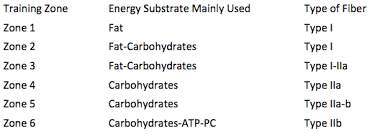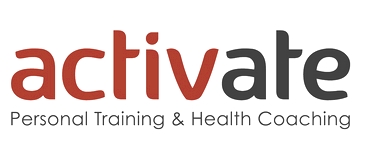Run slow. Run fast. Repeat...
Ride slow. Ride fast. Repeat...
Training at different intensities is an age old mantra, one that through new scientific understanding is becoming increasingly popular again, and it's now got a catchy name: ZONE 2 TRAINING.
Zone 2 training has become more popular since polarized training method was coined by Dr. Stephen Seiler. The theory goes: train for 80% of your time in zone 2, and you will become more efficient at utilising fat for energy (fatOX or fat oxidation), at higher intensities. Plus you will also be able to clear lactate faster, raise your power output and even live longer. The reason for this is that zone 2 training works specific muscle fibres, increases your mitochondrial function and stimulates mitochondrial biogenesis.
Question is, what is zone 2 and how do you find it? Well in this blog post you are going to find out, and I will explain an easy and accesible method, which requires zero technology to find your zone 2. After that you will learn how they do metabolic testing in a lab, to accurately pinpoint your zone 2 and other training zones.
Athletes have a given number of training zones (usually 5 or 6), and zone 2 training is obviously situated between zone 1 and zone 3. Zone 1, also oxidizes mainly fats as a fuel source, but at a less efficient rate, whereas training in zone 3 already utilizes more carbohydrates or glycogen for fuel, as the increase in exertion level and intensity give way to a even further rise in heart rate. Zone 2, is that point at which your slow twitch muscle fibers are working at capacity, and that is the exact purpose of zone 2 training: to stress these slow twitch, or type-I muscle fibers as much as possible, without them recruiting glycogen burning fast-twitch muscle fibers and having to switch into a different energy system.
So, how do we find our zone 2?
Dr. Iñigo San Millan (who is Tadej Pogacar's physiologist and coach) tells us, that if you don't have access to a lab for metabolic or lactate testing, you can do a very simple conversation test. In terms of zone 2, this basically means that if you are riding or running and you can have a normal conversation you are probably very close to or right in zone 2. A normal conversation means that you can still speak, slightly forced maybe, but without getting out of breath. This means you are still breaking a sweat but you aren't having a conversation with very short two or three word sentences followed by continuous pauses to breathe air. In this case, you are probably starting to get out of zone 2 and working in zone 3. On the other hand, if you can pull off a lengthy monologue, without any problem you are probably at the lower bounds of zone 2 or still in zone 1. Another method, often used by runners, is the nose-breathing method. So if you can ride or run at an intensity that allows you to just breathe through your nose without any mouth breathing, then that would be also approximate your zone 2.

Image: Dr. Iñigo San Millan
What many athletes do, and doesn't always work is to estimate their zone 2 by looking at power or heart rate and use a percentage of their maximum heart rate (HRmax) or FTP. The problem here is, the fitter a person gets and the more zone 2 training you do, the better your mitochondrial function will be. Therefore, the more zone 2 training you do, the higher it will become in terms of percentage of HRmax or Power output. As a result, it might seem like someone is training too hard for being in zone 2, whereas in actual fact they are not and it is right for them.
Zone 2 testing in a lab setting.
Doing a metabolic fitness test at a lab is another way to pinpoint your different training zones and turnover points (LT1 LT2). Here a trained physiologist will have you use a cycle ergometer (a special static bike) where they gradually increase the wattage and record loads of data (expired gases, heart rate, blood pressure etc). Remember, what we are looking for to determine your zone 2, is the point at which your body is using the maximum about of fat and the minimal amount of glycogen as fuel, before the intensity then forces us to burn more carbohydrates and we cannot sustain that rate of fat burning any longer. By collecting and analyzing the expired gases, you can see the ratio between expired oxigen and carbondioxide, indicating whether you primarily use fat or carbohydrate as a fuel source. This is called the respiratory gas exchange ratio, and an RER of 0,7 would indicate you are not moving and primarily burning fat, and an RER of >1 would suggest you are primarily burning carbs. At the same time, during each of the stage blood lactate levels get monitored. For someone in zone 2, lactate levels would oscillate between 1,7 and 1,9mm (although this can very from person to person). Cyclist for example have lower blood lactate levels than for example runners or cross-country skiers. The physiologist will also look at perceived exertion. The test protocols most-frequently used will increase wattage on the cycle ergometer usually by 15 to 30 Watts every 3 to 5 minutes, depending on the individual. For finding zone 2 a subMAX test is being used, which is different from a normal stress test which is a maximal effort testing protocol.
Lastly...
One more thing to take into consideration when you do your zone 2 training, is that when you get out of zone 2 (for example on a climb), depending on how hard the effort was, it might take you up to 25-30min to get back into zone 2. Similarly, if you have a downhill section on your ride or run, you might easily fall out of zone 2. So to make the most of you training you must make an effort to remain in zone 2, especially if the terrain is hilly and/or the wind is gushing.
Now go and enjoy your zone 2 training, and feel free to send us a message should you have any questions or doubts about your training or if you want to dig deeper and learn more about your training zones.




